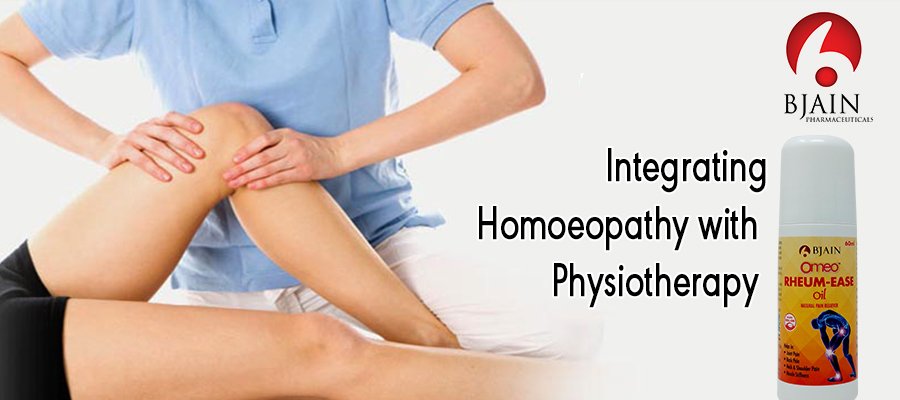Physiotherapy and homeopathic remedies are two separate approaches to helping individuals stay fit. Physiotherapy is similar to exercise therapy. It improves how we all function. If somebody has arthritic conditions which may cause joint pain and make mobility difficult, a physiotherapist might provide exercises and techniques to help.
They also teach ways to safeguard the joints and become more self-sufficient in everyday tasks. Homeopathy, on the contrary, represents a distinct approach to medicine. It believes in employing small dynamic molecules to stimulate the body’s inherent healing processes.
This World Physiotherapy Day 2024, we are creating awareness about the merits of physiotherapy and how an integrated approach with homeopathy can benefit people enormously. This collaborative effort can help patients with chronic diseases of bone, muscles, and joints. It can enhance their recovery speed and reduce their suffering.
Homeopathic Medicines and Physiotherapy
If you’re experiencing joint pain, you must maintain your physical activity. Many people are concerned that working out may exacerbate their discomfort, while others feel that homeopathy could be the best option. However, the joints are meant for movement and less movement can cause our muscles to weaken.
When you meet a physiotherapist, they will inquire about your current level of mobility and any problems you are experiencing. They will also examine your joints to find out the strength of your bones and muscles and their movement. They’ll use the details to develop a strategy tailored to your requirements.
There can be a lot of differences in opinion among many people but from the professional point of experience, I would tell you that the best way of treating such complaints is an integrated approach. Taking homeopathic medicines along with physical therapies as per the requirement can speed up the process. It can boost the rehabilitation in the best way possible.
Setting Goals to Enhance Physical Activity
Tips for improving your physical activity, creating targets, and achieving the perfect mix of rest and activity.
- If you’re initiating from scratch, we’ll advise you about any gear or training you may require to prevent injury.
- They will provide you with a series of at-home workouts to help you increase your level of fitness, power, agility, and joint mobility.
- This entails performing routines in a warm-water swimming pool that can assist with joint discomfort.
- Tips for pain management include utilizing heat or cold packs and having massage treatments.
- If necessary, they may recommend walking aids or specialized equipment that keeps you active and self-sufficient
Mechanism of Physiotherapy
Pain occurs when any aspect appears not right in your body. Physiotherapists employ effective approaches such as physical activities and direct therapy that will make you feel better. Pain and discomfort should decrease gradually as your body heals.
- Physiotherapists are not fitness coaches, but they are knowledgeable in activities that help strengthen your muscles and joints. Practicing such exercises daily will help your entire body become stronger and healthier.
- Physiotherapy involves workouts to help you walk effectively, maintain your posture, and avoid falling. Moving well boosts your confidence and allows you to enjoy life’s pleasures more.
- You may have discomfort following surgery. Physiotherapy may assist with you a variety of techniques. Establishing targets with your physiotherapist might help you stay optimistic and on schedule.
- Physiotherapists help you by employing physical activities, hands-on approaches, and exciting technology rather than just pills. This way, you don’t have to rely on drugs as heavily and may recover more healthily.
- People become agitated when they cannot understand why they are in pain. Skilled physiotherapists determine the cause and devise a strategy that will make you feel comfortable.
- Physiotherapy might help you improve your athletic performance or simply keep active. They employ clever tactics to improve your body’s performance.
- When your body feels wonderful, so does your mind. Physiotherapy improves your body so you may live a happy and fulfilling life.
Inclusion of Physiotherapy with Homeopathy
Homeopathy is a holistic system of medicine that harnesses the power of nature to bring out the cure. It helps the vital principle that can be understood as an inherent dynamic force in each individual. Homeopathic medicines strengthen the internal force and balance the economy of a person to initiate healing naturally. Our body has the capability of curing itself but in diseased conditions, it requires minimal force in the direction of healing. Homeopathy helps in that stimulation and treats in the most natural way possible.
Physiotherapy works basically on the principle of maintaining physiological balance. Let’s discuss those principles in detail.
- The main goal is to regain and improve mobility and functioning, whether due to an accident, impairment, or medical condition.
- Physiotherapists use a holistic approach, treating the mental, physical, and social variables that influence individual well-being.
- Therapies choices depend on the most recent scientific studies and medical evidence to assure efficacy.
- Every patient is given a therapy plan that matches to fulfill their requirements and expectations.
- Prevention is important to physiotherapists because it teaches patients how to avoid injuries and promotes general health.
Top 5 medicines for musculoskeletal complaints
- Omeo calcium tablets: It is a homeopathic specialty product by BJain Pharmaceuticals that helps in better absorption of calcium. It is indicated in osteoporosis, growing pains, and cramps of calves.
- Omeo Rheum ease oil: It helps relieve joint pains, back pain, sports injuries, sciatica, and rheumatic pains. It is also good for daily massages, relaxes muscular tension and helps rejuvenate nerves.
- Omeo Arthritis Syrup (Also in sugar free): It is specially formulated syrup for joint complaints. It helps relieve pain in joints with swelling, tenderness, stiffness. It also improves joints mobility.
- Omeo arthro-relief drops: It helps alleviate pain from arthritis and gout. It helps with joint pains along with tenderness.
- Omeo Sciatica drops: It is perfectly curated combination from well-known homeopathic medicines for sciatica. It helps relieve the pain extending down the heels from the hip, and numbness of legs. It also alleviate difficulty in walking and sitting.
Conclusion:
To conclude this discussion, I would like to shed light on the similarities between Homeopathy and Physiotherapy. They are individualized approaches. Homeopathy is based on the law of individualization i.e. every patient is unique and their required remedy should be selected based on uniqueness. Similarly, Physiotherapy treatment plans are also tailored to the specific needs of the patients. No one method fits all. Every patient is treated differently as per their complaints and a unique therapy routine is prepared accordingly.

Dr Aditi
Dr Aditi (BHMS) from NHMC Delhi, HMO ( Chandigarh Administration), Ex- SRF ( CCRH ), currently doing a research study of effect of Homoeopathic medicines in Mother and Child Health care in Chandigarh.


